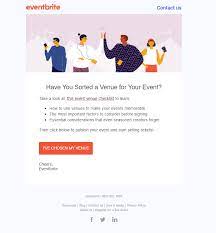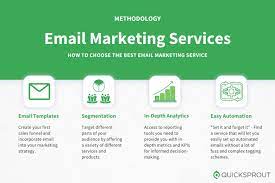Ecommerce Email Marketing: Boosting Sales and Building Customer Loyalty
In today’s digital age, ecommerce has become a thriving industry, with businesses of all sizes leveraging the power of the internet to reach customers around the globe. While having a visually appealing website and a great product range is essential, one key element that can significantly impact your online success is email marketing.
Email marketing for ecommerce has proven to be a highly effective strategy for boosting sales, engaging customers, and building long-term relationships. It allows businesses to directly communicate with their target audience, delivering personalized messages that resonate with individual preferences and needs. Here are some key reasons why ecommerce email marketing should be an integral part of your overall marketing strategy:
- Personalization: One of the biggest advantages of email marketing is its ability to deliver personalized content. By segmenting your email list based on factors such as purchase history, browsing behavior, or demographic data, you can tailor your messages to specific customer segments. This personal touch enhances customer experience and increases the likelihood of conversions.
- Driving Sales: With well-crafted email campaigns, you can showcase new products, promote special offers or discounts, and even send personalized recommendations based on customer preferences. By strategically including call-to-action buttons or links in your emails, you can guide recipients directly to your website’s product pages and drive sales.
- Building Customer Loyalty: Regularly engaging with your customers through email helps build trust and loyalty. By providing valuable content such as informative articles, product guides, or exclusive tips related to their interests or past purchases, you establish yourself as an authority in their eyes and encourage repeat business.
- Abandoned Cart Recovery: Abandoned carts are a common challenge for ecommerce businesses. However, with automated email workflows triggered by abandoned carts, you can send timely reminders to customers who left items in their carts without completing the purchase. These gentle nudges often lead to successful conversions.
- Feedback and Reviews: Email marketing provides an excellent platform for collecting feedback and encouraging customers to leave reviews. By sending post-purchase emails asking for feedback or offering incentives for leaving reviews, you not only gain valuable insights but also build social proof that helps attract new customers.
- Upselling and Cross-selling: Through email marketing, you can showcase complementary products or upsell higher-value items to customers who have already made a purchase. By analyzing their previous buying behavior, you can send targeted recommendations that increase the chances of additional sales.
To make the most of ecommerce email marketing, it’s important to follow some best practices:
– Build a quality email list by offering incentives for sign-ups or implementing opt-in forms on your website.
– Craft compelling subject lines that grab attention and entice recipients to open your emails.
– Use responsive design templates that ensure your emails display properly on various devices.
– Test different elements such as content, visuals, and call-to-action buttons to optimize your campaigns.
– Monitor key metrics like open rates, click-through rates, and conversions to measure the effectiveness of your email marketing efforts.
Remember, successful ecommerce email marketing requires a balance between promotional content and providing value to your subscribers. By delivering relevant and engaging messages consistently, you can nurture customer relationships, drive sales, and ultimately grow your ecommerce business.
So why wait? Start harnessing the power of ecommerce email marketing today and unlock new opportunities for success in the competitive online marketplace.
5 Essential Tips for Effective Ecommerce Email Marketing in the UK
- Keep your messages personalised and relevant to the customer – use their name, include products they have previously purchased or items they have shown an interest in.
- Use segmentation to target different customer groups with tailored emails – this will help you build relationships with customers and increase engagement.
- Include clear calls-to-action (CTAs) that are easy to see and understand – this will encourage customers to take action, such as making a purchase or visiting your website.
- Measure the success of your campaigns by tracking open rates, click-throughs and conversions – this will help you identify what works best for your audience and optimise future campaigns accordingly.
- Test different subject lines, content, design elements and timing of emails – testing is essential for improving email performance over time.
Keep your messages personalised and relevant to the customer – use their name, include products they have previously purchased or items they have shown an interest in.
Boost Your Ecommerce Email Marketing with Personalization and Relevance
In the world of ecommerce, standing out from the competition is crucial. One effective way to capture your customers’ attention and drive engagement is through personalized and relevant email marketing. By tailoring your messages to each individual customer, you can create a stronger connection, increase conversions, and foster long-term loyalty.
Personalization goes beyond just using your customer’s name in the email greeting. It involves understanding their preferences, purchase history, and interests to deliver content that truly resonates with them. Here’s why personalization is a game-changer for ecommerce email marketing:
- Strengthen Customer Relationships: When you address customers by their name and reference their previous purchases or interests, it shows that you value them as individuals. This personal touch helps build trust and a sense of loyalty towards your brand.
- Enhance Relevance: By carefully segmenting your email list based on customer data, you can send targeted messages that align with their specific needs and preferences. For example, if a customer has previously purchased running shoes from your online store, sending them emails featuring new arrivals or exclusive offers on running gear will be more relevant than generic promotions.
- Increase Open Rates and Click-through Rates: Personalized subject lines that mention the recipient’s name or highlight a product they have shown interest in are more likely to grab attention in crowded inboxes. This can lead to higher open rates and ultimately drive more traffic to your website through increased click-through rates.
- Drive Conversions: When customers receive emails showcasing products they have previously purchased or items related to their interests, it creates a sense of familiarity and relevance. This increases the chances of them making repeat purchases or exploring new offerings.
- Reduce Email Fatigue: Sending generic mass emails can lead to disengagement or even unsubscribes from your mailing list. However, by delivering personalized content that adds value to each customer’s journey, you can avoid email fatigue and keep them eagerly anticipating your messages.
To implement personalization effectively in your ecommerce email marketing campaigns, consider the following tips:
– Collect and utilize customer data: Use tools and analytics to gather information on customer preferences, purchase history, and browsing behavior. This data will help you segment your email list and create targeted campaigns.
– Dynamic content: Utilize dynamic content blocks within your emails to automatically populate product recommendations based on each customer’s unique profile. This allows you to showcase items they are most likely to be interested in.
– Automation: Leverage automation tools to trigger emails based on specific actions or events. For example, send a follow-up email with related products after a purchase or a reminder email for items left in the cart.
Remember, personalization is not a one-time effort but an ongoing strategy. Continuously analyze customer data, monitor campaign performance, and refine your approach to ensure that your messages remain relevant and engaging.
By keeping your ecommerce email marketing messages personalized and relevant to each customer, you can create a more meaningful connection that drives conversions and builds lasting loyalty. Start implementing these strategies today and watch your business thrive in the competitive world of ecommerce.
Use segmentation to target different customer groups with tailored emails – this will help you build relationships with customers and increase engagement.
Segmentation: The Key to Effective Ecommerce Email Marketing
In the world of ecommerce, standing out from the competition and building strong relationships with customers is crucial. One powerful tool that can help you achieve this is segmentation in your email marketing campaigns. By dividing your customer base into distinct groups and tailoring your emails accordingly, you can create personalized experiences that resonate with each individual and drive engagement.
Segmentation allows you to target different customer groups based on various factors such as demographics, purchase history, browsing behavior, or interests. By understanding the unique characteristics and preferences of each segment, you can deliver highly relevant content that captures their attention and compels them to take action.
When it comes to ecommerce email marketing, segmentation offers several benefits:
Personalization: Customers appreciate receiving emails that feel personalized and relevant to their needs. By segmenting your audience, you can send targeted messages that address their specific interests or pain points. This personal touch builds trust and strengthens your relationship with customers.
Increased Engagement: Tailored emails have a higher chance of capturing the recipient’s attention and driving engagement. When customers receive content that aligns with their preferences or past purchases, they are more likely to open, read, and interact with your emails. This leads to higher click-through rates and conversions.
Improved Conversion Rates: Segmentation enables you to send targeted offers or promotions to specific customer groups. By understanding their needs or purchase history, you can present them with products or services they are more likely to be interested in. This increases the likelihood of conversions and boosts your overall sales.
Customer Retention: Building strong relationships with customers is essential for long-term success in ecommerce. Segmentation allows you to nurture these relationships by sending tailored content that adds value to each customer segment’s unique journey. This keeps customers engaged, satisfied, and more likely to remain loyal over time.
To effectively implement segmentation in your email marketing strategy:
Collect Relevant Data: Gather data on your customers’ demographics, purchase history, and preferences through sign-up forms, surveys, or tracking tools. This information will serve as the foundation for your segmentation efforts.
Define Customer Segments: Analyze the collected data to identify distinct customer segments based on common characteristics or behaviors. Create segments that make sense for your business and align with your marketing goals.
Craft Tailored Content: Develop email campaigns that speak directly to each customer segment’s needs and interests. Personalize subject lines, content, and offers to ensure maximum relevance and impact.
Test and Refine: Continuously monitor the performance of your segmented email campaigns. Track metrics such as open rates, click-through rates, and conversions to identify areas for improvement and optimize your future campaigns.
By using segmentation in your ecommerce email marketing strategy, you can build stronger relationships with customers, increase engagement levels, and ultimately drive more conversions. Take the time to understand your audience and deliver tailored content that resonates with their unique needs – it will set you apart from the competition and contribute to long-term business success.
Include clear calls-to-action (CTAs) that are easy to see and understand – this will encourage customers to take action, such as making a purchase or visiting your website.
Boost Your Ecommerce Email Marketing with Clear Calls-to-Action
When it comes to ecommerce email marketing, one crucial element that can make or break your campaign’s success is the presence of clear and compelling calls-to-action (CTAs). A well-placed and easily understandable CTA can significantly increase customer engagement and drive conversions. Here’s why including clear CTAs in your emails is essential:
- Encourages Action: The primary purpose of an email marketing campaign is to prompt recipients to take action. Whether it’s making a purchase, visiting your website, signing up for a newsletter, or participating in a promotion, a strong CTA serves as a direct invitation for customers to engage with your brand. By clearly stating what you want them to do, you eliminate confusion and make it easier for customers to respond.
- Increases Click-through Rates: A well-designed CTA that stands out in your email layout attracts attention and entices recipients to click. By using contrasting colors, bold fonts, or buttons, you can draw the eye towards the CTA and make it visually appealing. This increases the likelihood of customers clicking through to your website or landing page, driving traffic and potential sales.
- Enhances User Experience: Customers appreciate simplicity and clarity when interacting with emails. By providing an easily identifiable CTA that clearly communicates the next step they should take, you enhance their user experience. A straightforward CTA reduces frustration and makes it effortless for customers to navigate through your offerings.
- Supports Mobile Optimization: With the rise of mobile usage, ensuring that your emails are mobile-friendly is crucial. Including clear CTAs that are easy to tap on small screens is vital for driving conversions on mobile devices. Optimize your CTAs by making them large enough for easy tapping and ensuring they are placed within thumb-friendly areas of the screen.
- Drives Conversions: Ultimately, the goal of ecommerce email marketing is to convert recipients into customers. A well-crafted CTA can significantly contribute to achieving this goal. By using persuasive language, instilling a sense of urgency, or offering exclusive incentives, you can motivate customers to take action and make a purchase. A clear CTA guides them through the conversion process and increases the chances of a successful transaction.
To maximize the effectiveness of your CTAs, consider these best practices:
– Use action-oriented verbs that clearly communicate what customers should do (e.g., “Shop Now,” “Subscribe Today,” “Get Your Discount”).
– Place CTAs prominently within your email design, ideally above the fold or in a highly visible position.
– Make your CTAs stand out by using contrasting colors that complement your brand’s visual identity.
– Keep your CTAs concise and straightforward, avoiding any ambiguity or confusion.
– Test different variations of CTAs to determine which ones resonate best with your audience and drive the highest conversion rates.
Remember, clear calls-to-action are an essential component of successful ecommerce email marketing campaigns. By guiding and motivating customers to take action, you can increase engagement, drive traffic to your website, and ultimately boost sales.
Measure the success of your campaigns by tracking open rates, click-throughs and conversions – this will help you identify what works best for your audience and optimise future campaigns accordingly.
Measuring Success in Ecommerce Email Marketing: Key Metrics for Optimal Campaign Performance
In the world of ecommerce email marketing, success lies not only in crafting compelling messages but also in tracking and analyzing the performance of your campaigns. By measuring key metrics such as open rates, click-throughs, and conversions, you gain valuable insights into what resonates with your audience and can optimize future campaigns accordingly.
Open rates indicate the percentage of recipients who open your emails. It’s an essential metric as it reflects the effectiveness of your subject lines and overall email relevance. A high open rate suggests that your subject lines are engaging and enticing enough to grab attention. On the other hand, a low open rate may indicate that you need to refine your subject lines or reconsider your targeting strategy.
Click-through rates (CTR) measure the percentage of recipients who click on links within your emails. This metric indicates how well your content and call-to-action buttons are driving engagement. A higher CTR indicates that your emails are successfully capturing interest and motivating recipients to take action. By analyzing which links receive the most clicks, you can gain insights into what kind of content or offers resonate best with your audience.
Conversions are perhaps the most critical metric for ecommerce email marketing. They represent the percentage of recipients who complete a desired action, such as making a purchase or signing up for a newsletter. Tracking conversions allows you to assess the overall effectiveness of your campaigns in generating tangible results for your business.
To measure these metrics effectively, make use of email marketing platforms that provide detailed analytics reports. These reports will give you a clear picture of how each campaign performs and allow you to compare results over time. With this data in hand, you can identify trends, spot areas for improvement, and make data-driven decisions to optimize future campaigns.
Here are some tips for leveraging these metrics effectively:
- A/B Testing: Experiment with different subject lines, content variations, or visuals to see which combinations yield the best results. Test one element at a time to isolate variables and identify what resonates most with your audience.
- Segment Your Audience: Analyze metrics based on different customer segments to gain insights into the preferences and behaviors of specific groups. This allows you to tailor your campaigns to target segments more effectively.
- Monitor Trends: Track changes in metrics over time to identify patterns and adjust your strategies accordingly. This will help you adapt to evolving customer preferences and stay ahead of the competition.
Remember, measuring the success of your ecommerce email marketing campaigns is an ongoing process. Continuously analyze and optimize based on the data you collect, as this will lead to more effective communication, higher engagement, and ultimately, increased conversions for your business.
So, start tracking those open rates, click-throughs, and conversions today – it’s the key to unlocking the full potential of your ecommerce email marketing efforts!
Test different subject lines, content, design elements and timing of emails – testing is essential for improving email performance over time.
Testing for Success: Enhancing Ecommerce Email Marketing Performance
In the ever-evolving world of ecommerce email marketing, staying ahead of the competition requires continuous improvement and optimization. One crucial aspect that can significantly impact the effectiveness of your email campaigns is testing. By experimenting with different subject lines, content, design elements, and timing, you can unlock valuable insights and improve your email performance over time.
Subject Lines: The first impression matters, and subject lines play a vital role in determining whether your emails get opened or end up in the dreaded spam folder. Test different variations to see what resonates best with your audience. Experiment with length, personalization, urgency, or curiosity-inducing techniques to find the winning formula that entices recipients to click.
Content: The content of your emails should engage and captivate readers. Test different types of content such as product descriptions, storytelling narratives, or user-generated content. Measure how each type performs in terms of open rates and conversions. Additionally, experiment with the length of your emails to find the optimal balance between providing valuable information and keeping it concise.
Design Elements: Visual appeal is crucial in catching the reader’s attention and conveying your brand message effectively. Test various design elements like color schemes, font styles, images, and call-to-action buttons to determine which combinations generate higher engagement rates. Ensure that your emails are mobile-responsive since a significant portion of users accesses their emails on smartphones or tablets.
Timing: Timing plays a vital role in email marketing success. Experiment with different send times and days of the week to identify when your audience is most receptive to receiving emails. Consider factors such as time zones and target audience demographics when determining optimal sending times. By sending emails at strategic moments, you increase the chances of them being seen and acted upon promptly.
Testing Methodology: To conduct meaningful tests, use A/B testing or split testing methodologies. Split your email list into smaller segments and send different versions of your emails to each segment. Compare the performance metrics of each variation to identify what works best for your audience. Remember to test one element at a time to accurately attribute any changes in performance.
Continuous Improvement: Testing is an ongoing process, and it’s essential to track and analyze the results regularly. Monitor key metrics such as open rates, click-through rates, conversions, and unsubscribe rates. Use these insights to refine your future email campaigns continually. By consistently testing and optimizing, you can adapt to evolving customer preferences and ensure long-term success.
In the competitive landscape of ecommerce email marketing, testing is not just a luxury but a necessity. Embrace experimentation and refine your strategies based on data-driven insights. By testing different subject lines, content, design elements, and timing of emails, you can unlock the potential for improved engagement, higher conversions, and ultimately drive the success of your ecommerce business.




